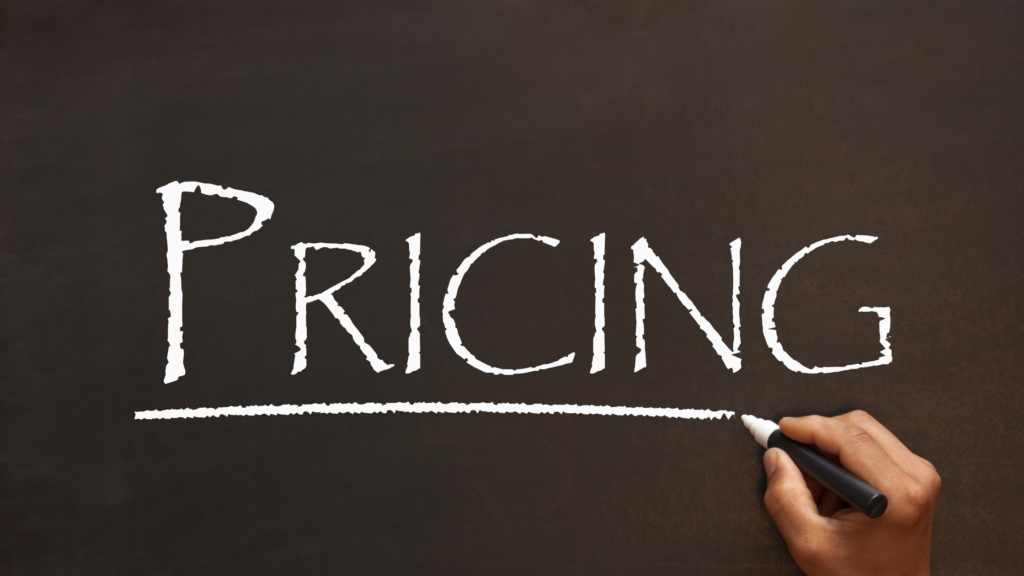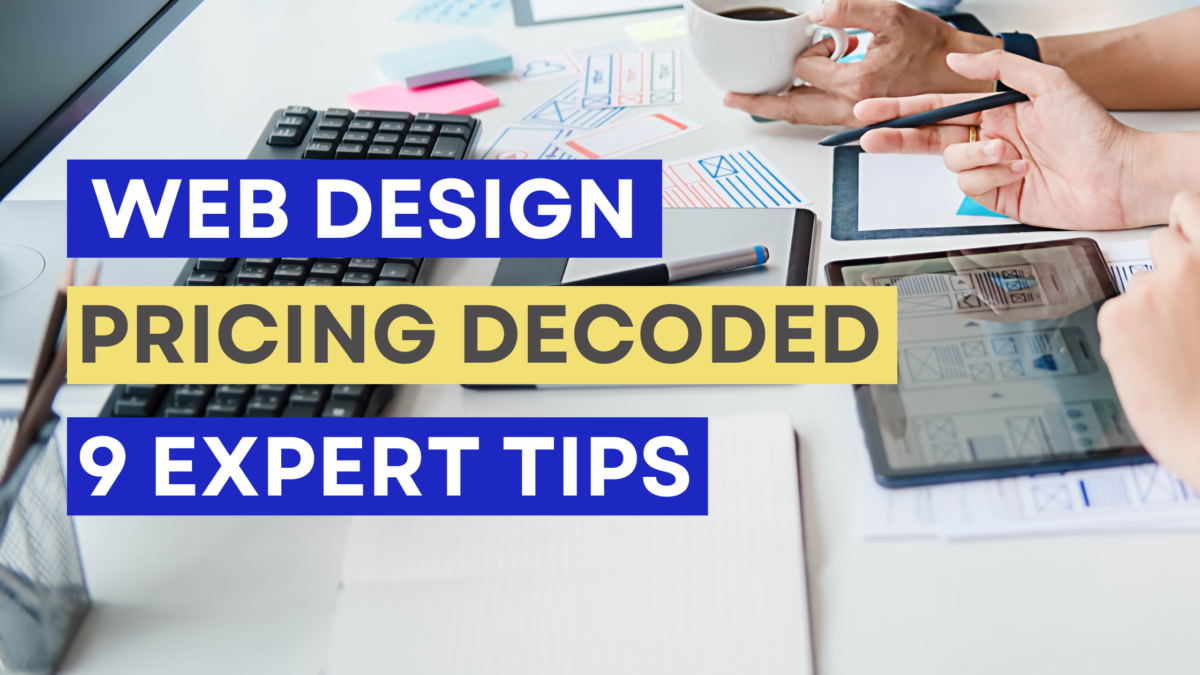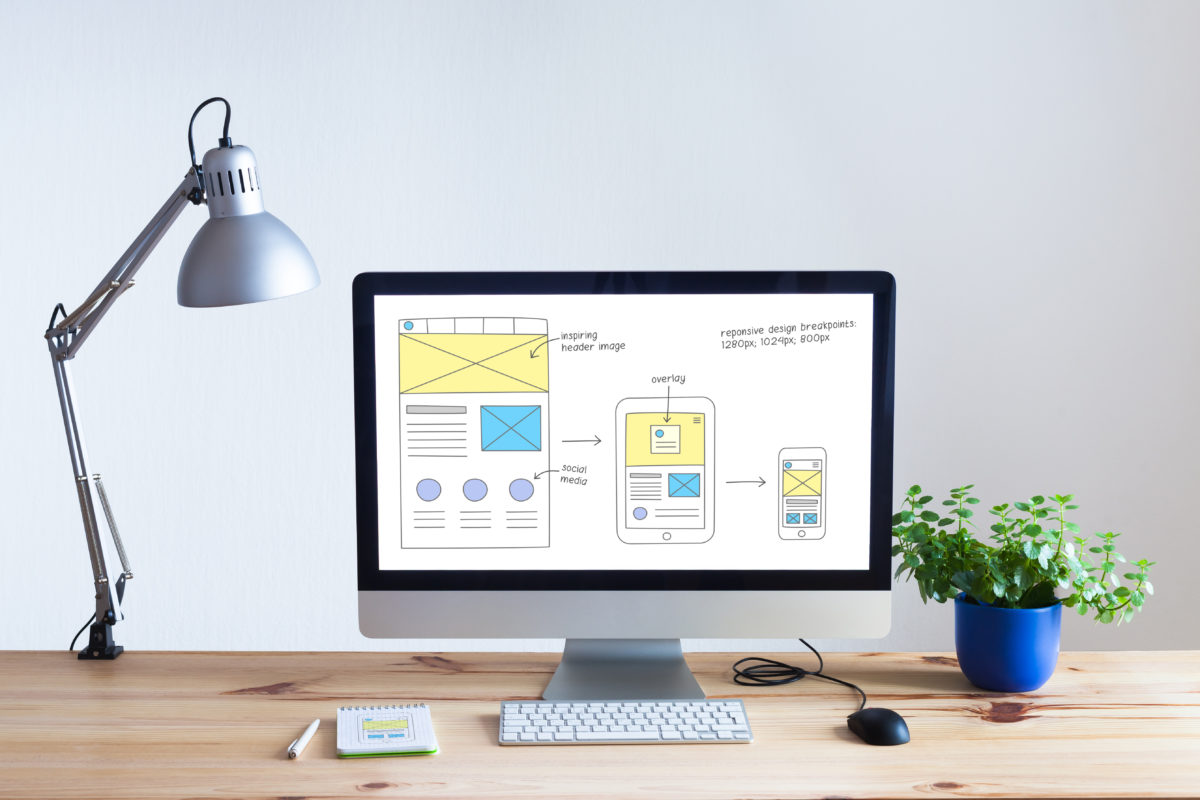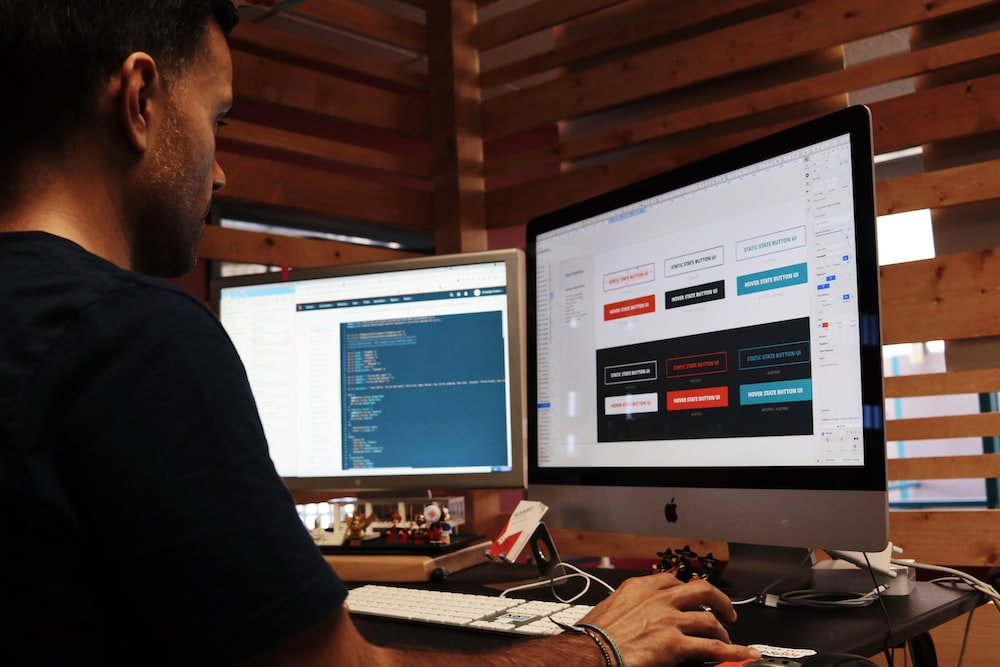Today, having a robust online presence is key for any business to succeed. And a well-designed website is a critical component of that online presence. It is where potential customers come to learn about your products or services, and if your website isn’t up to par, you could be losing out and leaving money on the table. However, when it comes to hiring a web designer to create or redesign your website, it can be difficult to foresee what to expect in terms of pricing.
The truth is, there is no standard set price for web redesign. Why? Because the level of expertise, time, and effort needed for each project is distinct and exclusive.
At Rezolutions Design, we understand that a website redesign can be a daunting task for any business. However, we also know that a well-executed redesign can be a game changer for your brand’s market equity and bottom line. That’s why we’ve compiled a comprehensive guide to help you estimate website redesign costs accurately and make informed decisions. We will cover:
Understanding the Basics Of Web Redesign Costs
Before diving into the facrs that influence website redesign costs, let’s first understand what a website redesign entails. A website redesign is the process of updating and upgrading a website’s design, functionality, and content to meet users’ changing needs, as well as to improve its visual appeal and usability. This can include a complete overhaul of the website’s look, feel, and layout, as well as updating its features and functionality to improve the user experience.
The cost of a website design\redesign can vary greatly depending on the website’s size, the design’s complexity, the features and functionality required, and the experience and expertise of the team you hire to do the work. Typically, a small business website redesign can cost anywhere from $2,500 to $10,000, while a more complex website for a larger business can cost upwards of $50,000 or more.
Why Estimate Website Redesign Costs?
Before diving into the specifics of website redesign costs, it’s essential to understand why estimating these costs is crucial. A website redesign can encompass a wide range of activities, from design and development to content creation and SEO optimization. Each of these activities requires different skills, tools, and resources, which ultimately translate into costs.
By estimating website redesign costs upfront, you can:
- Set realistic goals and expectations for your website redesign project.
- Allocate resources and budget effectively, avoiding surprises and overruns.
- Compare quotes from different vendors and choose the one that offers the best value for your money.
- Monitor the progress of your website redesign project and make adjustments as needed.
Web Design Pricing Models

Understanding the different pricing models for web design services can be a daunting task for anyone who is new to the world of web design. With so many different pricing structures and service offerings available, it can be challenging to know what you should be paying for and what is considered reasonable for your needs.
To help you and your team make sense of it all, let’s take you through some of the most popular models to help you navigate the often confusing landscape of web design pricing.
Hourly Pricing
One of the most common pricing models for web design services is hourly pricing. In this model, the web designer will typically charge market based hourly rates for their services, which can vary depending on the designer’s experience, skill level, and location. These rates can run from $50 to over $200 per hour.
Hourly pricing can be an excellent option for those needing a small or simple website design, as it allows for more flexibility in project scope and timeline. Keep in mind that hourly pricing can quickly add up, particularly for more extensive or complex projects.
Pros of Hourly Pricing
- Offers more flexibility in terms of project scope and timeline
- Can be a good option for smaller, simpler projects
Cons of Hourly Pricing
- Can quickly become expensive for larger or more complex projects
- Can be difficult to estimate total project cost
Flat Rate Pricing
Flat rate pricing is another popular pricing model for web design services. In this model, the web designer will charge a fixed fee (one off fee) for a specific scope of work. This fee is agreed upon before the project begins, and the client knows exactly how much they will be paying for the website design services.
Flat rate pricing is often preferred for larger and more complex projects as it allows for a clear understanding of the total cost of the project upfront. This pricing model can also be beneficial for clients who have a set budget and need to know the total cost of the project before committing to it.
Pros of Flat Rate Pricing
- Provides a clear understanding of the total cost of the project upfront
- Suitable for larger and more complex projects
- Ideal for clients who have a set budget
- Allows clients to budget accordingly and avoid any unexpected costs
Cons of Flat Rate Pricing
- May not offer as much flexibility in terms of project scope and timeline
- May require additional fees for any changes or revisions to the original scope of work
Value-Based Pricing
Value-based pricing is a newer pricing model that has been gaining popularity in the web design industry. In this model, the web designer charges a fee based on the value they will provide to the client’s business rather than the time or resources required to complete the project.
Value-based pricing takes into account the potential impact the website design will have on the client’s business, such as increased revenue, improved brand recognition, or increased customer engagement. This pricing model can be particularly beneficial for clients who are looking for a website design that will drive results and provide a significant return on investment.
Pros of Value-Based Pricing
- Charges a fee based on the potential impact the website design will have on the client’s business
- Can provide a significant return on investment
- Ideal for clients looking for a website design that will drive results
Cons of Value-Based Pricing:
- Can be difficult to accurately estimate the value of the website design
- May not be suitable for smaller projects or clients with limited budgets
Factors That Affect Web Design Pricing
Now that we’ve covered the main pricing models, let’s dive into the factors that affect web design pricing. Understanding these factors can help you make an informed decision about how much to pay for a web designer’s services.
The complexity of the Website: The size and complexity of your website can significantly impact the cost of a redesign. Larger and more complex websites require more time and effort to redesign, which can increase costs. On the other hand, smaller and simpler websites may not require as much work, resulting in lower redesign costs.
Design Requirements and Customization: The design of your new website is another critical factor in estimating redesign costs. If you want a custom design that reflects your brand’s unique personality and values, it will cost more than a pre-built template that requires minor modifications. Similarly, if you need design elements such as logos, icons, or images, you may need to hire a graphic designer or purchase stock images, which will add to the costs.
Project Timeline: The timeline for your project can also affect web design pricing. If you need your website completed quickly, it may cost more than when you have a more flexible timeline. Rushed projects require designers to work longer hours, which can drive up the price.
Designer Experience: The experience of your web designer is also a factor in pricing. More experienced designers will typically charge more for their services, but they also bring more skills and expertise to the table. You may be able to find cheaper designers, but they may not have the same level of skill or experience.
Content Creation and Migration: Your website’s content is the foundation of your online presence, and redesigning it requires careful planning and execution. If you need to create new content, such as product descriptions, blog posts, or landing pages, you will need to factor in the costs of copywriting, editing, and proofreading. If you have existing content that needs to be migrated to the new site, you will need to consider time and effort required to transfer and format it correctly.
Functionality and Features: The functionality and features of your new website can also affect redesign costs. For example, if you need a custom application or plugin, you will need to hire a developer to build it, which will add to the costs. Similarly, if you need to integrate your website with third-party tools such as payment gateways, social media platforms, or marketing automation software, you will need to factor in the integration costs.
SEO Optimization: Finally, optimizing your website for search engines is crucial for attracting organic traffic and generating leads and sales. However, SEO optimization requires specialized knowledge and skills, which may require hiring an SEO expert or agency. Additionally, if your current website has SEO issues, such as duplicate content or broken links, you may need to fix them before redesigning the site, adding to the costs.
How to Find a Quality Web Designer
Let’s look at some tips to help you find the right designer for your project.
Look at Their Portfolio: One of the best ways to gauge a web designer’s skills and experience is by looking at their portfolio. This will help you evaluate the types of websites they’ve created in the past and identify whether their style matches what you’re looking for.
Read Reviews and Testimonials: Reading reviews and testimonials from past clients can also give you an idea of a designer’s level of skill and customer service. Look for designers with positive reviews and a track record of satisfied clients.

Ask for References: If you’re still unsure about a designer’s abilities or want more information about their work, don’t hesitate to ask for references. A good designer should be able to provide you with the contact information of previous clients who are willing to vouch for their skills and professionalism.
Communicate Your Needs Clearly: When meeting with a potential designer, make sure to communicate your needs and expectations clearly. This will help ensure that the designer understands what you’re looking for and can deliver a website that meets your requirements.
Consider Their Technical Expertise: In addition to design skills, it’s important to consider a designer’s technical expertise. They should be familiar with coding languages, such as HTML, CSS, and JavaScript, and have experience with responsive design and search engine optimization (SEO).
Evaluate Their Communication Skills: Working with a designer requires good communication. Look for a designer who is responsive and communicates clearly and effectively. This will help ensure that your project runs smoothly and that you’re happy with the end result.
Check Their Availability: Make sure to ask the designer about their availability and timeline for completing your project. If they’re booked up for the next several months or have a long turnaround time, you may want to consider other options.
Consider the Cost: Finally, consider the designer’s pricing and whether it fits within your budget. Remember that cheapest options may not always be the best, as quality and experience often come with a higher price tag.
Tips for Planning and Budgeting Your Website Redesign
Now that you have an idea of the costs involved in a website redesign project, here are some tips to help you plan and budget for a successful redesign:
- Set clear goals and objectives for your website redesign. What do you want to achieve with the redesign? Increased traffic, improved user experience, higher conversion rates, or all of the above? By setting clear goals, you can ensure that the redesign aligns with your business objectives.
- Determine your budget and stick to it. It’s easy to be carried away with a website redesign project, but it’s important to establish a realistic budget and stick to it. Be sure to include all costs associated with the redesign, including web design agency fees, content creation, and any third-party integrations.
- Research web design agencies and choose one that aligns with your needs and budget. Look for an agency that specializes with the type of website redesign you need and have a portfolio of successful projects. Be sure to ask for references and check online reviews before making a final decision.
- Communicate clearly with your web design agency. Be sure to communicate your goals, budget, and timeline clearly with your chosen agency. Regular communication throughout the project can help to ensure that the web design project stays on track and meets your expectations.
- Plan for ongoing maintenance and updates. A website redesign is just the beginning. Be sure to plan for ongoing maintenance and updates to make sure that your website stays up-to-date and continues to meet your business objectives.
Web Design Costs

Here are the estimated costs for a website redesign project in 2023 based on the various factors we just discussed:
Basic redesign: $2,500 – $5,000
- Updating design, colors, and fonts
- Minor content updates
- Basic functionality (e.g., contact forms, social media links)
Mid-level redesign: $5,000 – $10,000
- Custom design with more complex graphics and animations
- More extensive content updates
- Additional functionality
Advanced redesign: $10,000 – $50,000+
- Completely new custom design with advanced graphics, animations, and user experience (UX) features
- Extensive content creation or migration
- Advanced functionality and third-party integrations
- Well-thought-out SEO improvements
Of course, these costs are just estimates and can vary depending on the specific requirements of your website redesign project. It’s always a good idea to get quotes from multiple web design agencies to ensure you’re getting a fair price.
Agency Vs Freelance Web designer: Why Choose An Agency Over A Freelancer For Your Web Design
Choosing between an agency and a freelancer for web design services can be a challenging decision. Both options have their advantages and disadvantages. However, there a couple of reasons why you might consider choosing an SEO agency over a freelancer for your web design project:
- Expertise and Skillset: Web design agencies typically have a team of experts with a wide range of skills, including web design, web development, user experience design, content creation, and search engine optimization. This can be advantageous as it ensures that you will have access to a team of specialists with diverse skillsets who can collaborate to create a comprehensive and effective web design solution.
- Resources: Agencies have more resources than freelancers, including more advanced software and equipment, a larger team of designers and developers, and access to training and development programs. This can be particularly important for complex web design projects that require extensive resources to complete.
- Consistency and Reliability: When you work with an agency, you can expect a higher level of consistency and reliability compared to a freelancer. An agency will have more resources and staff to ensure that deadlines are met and quality standards are maintained.
- Scalability: Agencies can handle larger projects with more complexity and scope, and they can scale up their team and resources to meet the needs of the project. This way, you can be confident that the design project will be completed on time and within budget.
- Support and Maintenance: Once your website is launched, you may require ongoing support and maintenance services. An agency is better equipped to provide these services than a freelancer, as they have a dedicated support team to address any issues that may arise.
Revamp Your Website With A Web Design Agency That Gets The Job Done
Hiring a professional web designer can be a daunting task, especially when it comes to pricing. You need to understand the various factors that influence web design pricing and know the different pricing models available so you can negotiate a fair price for your web design project.
Remember, while price is an important factor, it shouldn’t be the only factor when choosing a web designer. Look for a website design agency with a solid portfolio, good communication skills, and a proven track record of delivering quality work.
If you’re in need of a professional web design company, don’t hesitate to contact Rezolutions Design. Our team of experienced website designers will help you create a stunning, user friendly and responsive website that meets your unique needs and budget. Whether you’re a small or mid-sized business owner or a large corporation, we’re here to help you achieve your online goals. Call us today to learn how our web design services can can get you ahead of the pack and start seeing results!























